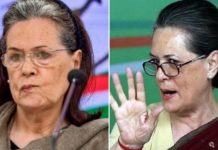
It all started at the Varsity Cafe in Cambridge, UK, when Sonia Maino met Rajiv Gandhi, a young engineering student at the university. It was love at first sight for the couple.
“As our eyes met for the first time, I could feel my heart pounding. As far as I was concerned, it was love at first sight.”
It was a long journey from Lusiana, Italy, to Safdurjung Road (Indira Gandhi’s residence). A nervous Sonia met Rajiv’s mother, Indira, who immediately put her future daughter-in-law at ease.

“She told me, ‘Don’t be afraid. I was young too and in love, and I understand you.’”
Swapping Pasta for Arhar Ki Dal Wasn’t Easy
Shortly, Sonia came to Indira’s home as her bahu. A drastic change in food, lifestyle and culture awaited. But, Indira the prime minister was as talented as Indira the saas.
“She was a very intelligent woman and she allowed me space and time to get used to new ways… new food, new way of dressing.”
The Crash and a Clash
Sonia and Rajiv initially stayed away from politics. While Sanjay Gandhi was actively involved in politics, Sonia and Rajiv were busy leading the life of a normal couple with their children – Rahul and Priyanka. That all came to an end when Sanjay died in a plane crash in 1980.
Indira wanted Rajiv to be her political heir. But Sonia would have none of it.
Despite Sonia’s hesitation, Rajiv decided to join politics. In the meantime, Sonia stayed at home, raising the next generation of Gandhi politicians.
Assassination of Rajiv Gandhi
In 1991, Sonia’s worst fear came true. Rajiv was assassinated. Sonia had lost her husband and mother-in-law to politics. As she sat next to her husband’s body, a leader for the Naga Congress requested her to accept the leadership of the Congress party.
However, six years later, Sonia gave in to the demands and joined the Indian National Congress in 1997.
Sonia’s Surge
Immediately after Sonia took over the leadership, Congress saw major victories in Assembly elections of Rajasthan, New Delhi, and Madhya Pradesh (which back then included Chhattisgarh too). But all was not well within the ranks of the party.
Senior Congress leaders like PA Sangma and Sharad Pawar quit the party. Unperturbed by these setbacks, Sonia looked down south for a new ally – none other than Subramanian Swamy! He played mediator between Sonia and J Jayalalithaa, and they joined hands to topple the coalition government of Atal Bihari Vajpayee.
Although Vajpayee was able to come back to power in 1999, Sonia had proven her mettle as a seasoned politician.
And Then, She Won
Sonia was elected as Leader of Opposition in the Lok Sabha in 1999. She built a core team that included the future President of India, Pranab Mukherjee, Arjun Singh, AK Antony, and Digvijaya Singh. She also took tips from her political advisor, Ahmed Patel.
In 2004, Sonia went head on against the BJP-led NDA government and won. Congress and her allies, the UPA, managed 218 seats. But that only put her in the centre of another political storm. A question that was raised not just among her political rivals but also within her own party.
Should an Italian born citizen be the Prime Minister of India?
No PM But a Politician Par Excellence
In a decision that surprised everyone, Sonia chose to decline the post of Prime Minister. Instead, she nominated former finance minister Manmohan Singh for the same.
Some of her supporters called it a sacrifice, others a political masterstroke. But political pundits agreed that even though she was not the Prime Minister, she was the most influential person in the country.
Source: Quint


































